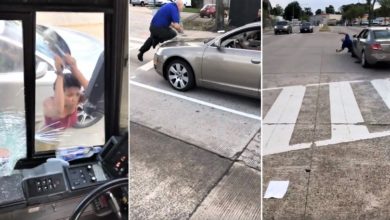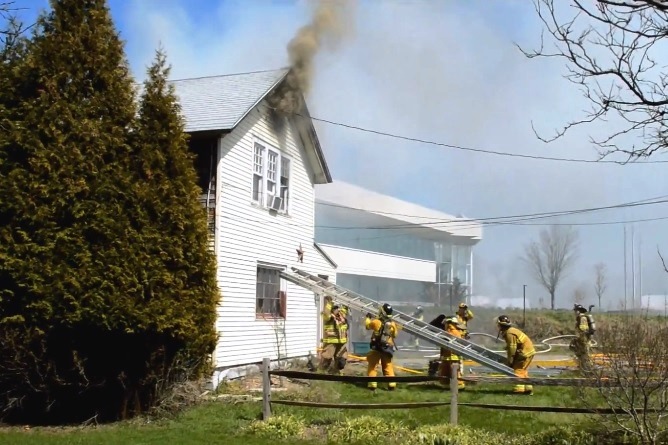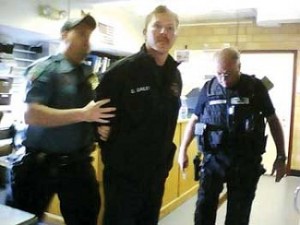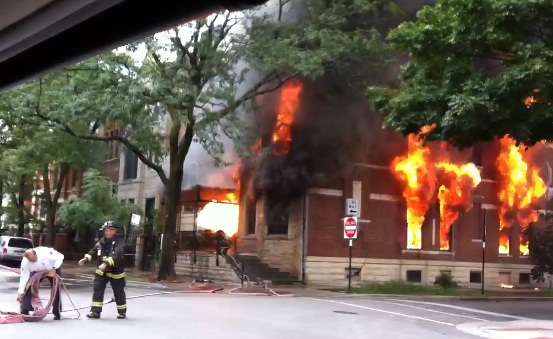Thank you Dennis Rubin! More than three-years later former DC fire chief confirms STATter911.com’s reporting was accurate.

Click here for FireEngineering.com article by Dennis L. Rubin
Rubin says STATter911.com reporting not true – July 3, 2009
NOTE: This article has been edited to fix some links, images, grammar & style
Some background from Dave
On the morning of July 2, 2009, I was tuned in to the most listened to radio station in the nation’s capital when I heard my name mentioned. The city’s fire chief told an interviewer that some of my reporting about a major local news story was not true. Something like that gets a reporter’s attention.
While I was taken by surprise, such claims are something reporters must deal with in a serious manner. Because of the chief’s statement, I rechecked the facts with various sources. It was important to make sure nothing had changed and to see if my reporting was still accurate and fair. The next day, I posted all the details, including the chief’s comments. But I had something new to report. It was an on-the-record statement from the fire department PIO. The spokesman — who heard the same broadcast — directly contradicted his boss.
Now, more than three-years later, the same fire chief has written his own column about the news media and that incident. Expecting the article to have more negative complaints about my reporting, I was pleasantly surprised. In it, the chief now verifies most of what his PIO told me and what I reported at the time. In other words, his original statement in radio interview about me and my reporting wasn’t really true.
Some will accuse me of trying to settle an old score with this column and others will find this absolutely boring. While I’m always concerned about my credibility and reputation, this episode has additional value. It provides insight into how sometimes public information decisions made during a crisis aren’t always based on good policy. In this case, it was based on a political leader’s ego. It’s surprisingly a topic where the chief and I are now in agreement.
The chief’s new column
Dennis Rubin, the former DC Fire & EMS Department chief, posted an article on FireEngineering.com Wednesday about managing the flow of information at a large-scale emergency. It relates his experience with the press at the crash of two Metrorail trains on June 22, 2009. The collision left nine people dead and scores injured. Chief Rubin wrote that two important lessons were learned:
1. Keep providing the information to the media, even if it is “stale” and already discussed items. Shutting the “news tap” off altogether is never a good idea.
2. The local media felt shut out when the national folks arrived (typically from their parent companies). I should have made extra efforts to include the local folks in every aspect of the media presentations. Remember that when the national and international press go home, you are left with the media locals, and they are always watching your department. Adding the local folks to a discussion wouldn’t have taken anything away from the reports and would have allowed the hometown media to feel a part of everything.
You will get no argument from me about keeping the information flowing and taking care of the local news media. Those exact points were made by me on the very day Chief Rubin’s column was posted to Fire Engineering’s website. I was leading a class that for a group of visiting officials from Southeast Asia. The topic was handling the press during critical incidents. In fact, I used the Metro crash as an example of how not to do deal with the news media. The incident has been a part of my presentations around the country during the last two years.
Better late than never
I need to thank Chief Rubin for writing this column. For the first time, in a very public way, he has acknowledged that some of what he said about me, my blog and his own public information officer 11 days after the crash was wrong.
In his column, Rubin now confirms that an anticipated press conference by Mayor Adrian Fenty completely stopped the information flow in the second hour of this developing incident. This happened despite the public — and reporters — being hungry for details. That’s because much of the region’s subway system was shut down at rush hour with many people worried about the fate of their loved ones.
Chief Rubin also now admits it was wrong for the mayor and chief to provide interviews and information to CNN’s Larry King and national fire/EMS publications without also taking care of the local news media.
What Statter reported & the chief said in 2009
These very issues were brought up in my TV and STATter911.com reports in the days immediately following the incident (here & here).
I also had many discussions about these concerns with the DC Fire & EMS Department’s media team of Deputy Chief Kenneth Crosswhite, Billy D. Hayes and Alan Etter. I tired to discuss it with Chief Rubin but he never responded to message lefts on his cell phone. All of them heard an earful from me. It was frustrating that Rubin and his command staff talked about the handling of the incident with FirefighterNation.com/ Fire Rescue Magazine, Firehouse.com, FireRescue1.com and JEMS.com. At the same time, the department was under orders from the mayor’s office to turn down interview requests from local reporters.
Rubin went on radio and TV July 2, 2009 to say what I published wasn’t true. He told WTOP Radio’s Mark Segraves, “I don’t think that information ever shut down. At least I am going to say that.”
Here’s more of what Chief Rubin said on WTOP:
I know Mr. Statter had described that fact and that just simply isn’t true. The other side of it is, though, if we were to shoot from the hip, I think instead of being here today saying why did it take a bit to learn the number of folks, to have some notion as to what occurred here. Instead of that, I think we would be under the gun, why did you give us such inaccurate information?
I know there were some comments made about the number of cell telephone calls that were made. I never received a one from Mr. Statter and I know he is the person that’s complaining the most. But I would have to give us a very high mark, that of course is, the mayor’s management consequence team that worked at that event providing accurate timely and effective information.
Rubin now admits there was a 45-minute gap in the flow of information and that it was done because “the mayor’s office directed the fire department PIO team to prepare for a mayoral press conference.” If you look back at my reporting you will see I also wrote the order came from Mayor Adrian Fenty’s office but that the gap was about 70-minutes.
I reported the mayor’s office said there were to be no further interviews at the scene until Mayor Fenty speaks. Rubin said that was not correct and told my Channel 9 colleague Keith Williams right after the radio appearance, “There were no restrictions or controls placed on fire and EMS by anyone.”
But Rubin’s own PIO at the time, Alan Etter, who was in the process of leaving the department, contradicted the chief. Here’s what I reported:
Etter confirmed, on the record, that it was accurate. Etter said at about 6:10 PM, 70-minutes after the crash was reported, he received a page from Mayor Adrian Fenty’s press office ordering that he give no further interviews about the collision. According to Etter, the page indicated Mayor Fenty would be speaking at 7:15 PM.
Until that page came Etter had worked very hard in making sure the local news media and the public were informed about this important story. Then suddenly there was the news blackout. This was followed by orders not to upstage the mayor with local interviews in the days after the tragic crash.
In conclusion
For the record, I have never indicated the stopping of the information flow came on orders from Chief Rubin. It wasn’t his style of handling information at or following a major incident. But it certainly was the style of his boss, Mayor Fenty. The Washington Post made note of that two days after the Metro crash in an article by reporter Nikita Stewart titled, “D.C. Mayor Tries Too Hard to Control the Message, Critics Say“.
In the old STATter911.com articles you will see there were other missteps in handling the media that day, including a bit of a heavy hand from the police department. (NOTE: Then DC Police Chief Cathy Lanier much later acknowledged that officers were wrong to attempt to censor news media recording the crash scene.)
It’s sad that any of this even became an issue. It distracted from the expert job Chief Rubin and the men and women of the department did that day in handling a very high profile and difficult mass casualty incident.
And a final word
When you read Chief Rubin’s article, which I urge you to do, you may note he has the Metro crash occurring a week after the date I use. For the record, June 22, 2009 is accurate.
I can tell you even a small error involving details of a rail incident is very uncharacteristic for Dennis Rubin. During a panel discussion we both participated in at the National Fire Academy I just happened to mention the deadly 1987 Chase, Maryland Amtrak collision. Off the top of his head, Rubin rattled off all the pertinent facts and figures of that incident, including the exact date. Quite impressive. As I recall, Chief Rubin told me his dad was a railroad man.
Do you want to sell a rig? Click HERE to find out how with SellFireTrucks.com.






